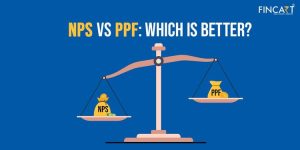Table of Contents
ToggleWhen you think about retirement, you picture peaceful days without the daily grind. You get more time to spend with your loved ones, chase the hobbies that had to take a backseat during the working years and travel to places you’ve always wanted to. It’s a time we all look forward to, but to make this dream come true, you need to carefully plan for it. That’s where pension plans and retirement plans come in. Pension plans and retirement plans are parts of your financial plan that are specifically designed to support you after you stop working. They help cover your expenses and give you financial independence, ensuring a secure future during your golden years.
So let’s explore the best retirement plans and pension schemes in India, what they are, their types, benefits, features, and how you can buy them.
What are Retirement / Pension Plans?
When you eventually retire, you want a reliable and sufficient source of income through effective retirement planning. These plans provide you with that stability in your retirement years and make sure that you can maintain whatever lifestyle you desire. During your working years, you regularly invest money in pension or retirement plans and accumulate a fund that will help you out in your post-retirement phase. Retirement and pension plans are invaluable tools that are used when you’re doing your overall financial planning, and the sooner you start incorporating them, the better.
How Do Pension Plans Work?
The way retirement plans work is simple. When you buy a plan, you have to make regular payments called premiums. You have to make these contributions to whichever pension plan you pick during your working years and build up a corpus over time. This fund is then invested in different financial instruments as part of your investment planning to generate returns over a set period. These mature when you reach your retirement age and you get a reliable monthly income.
This is why it’s important to get started on investing in pension plans as soon as you can – to take advantage of compound interest. The more time you invest, the larger your returns will be, and you’ll protect your money’s value from eroding due to inflation.
Types of Pension Plans/Retirement Plans in India
There are many types of pension plans available in India for you to choose from, some of them are:
1. National Pension Scheme
The National Pension Scheme is backed by the Government of India, and it is one of the most popular retirement accounts to invest in. It doesn’t matter if one is an employee or self-employed, either can start investing in the NPS scheme with just Rs. 1000. This scheme invests in assets you prefer like equity, corporate bonds, government funds, or other debt instruments, and the returns depend on the performance of the assets you pick. One has to stay invested in the National Pension Scheme until they reach the age of 60. Upon retirement, you can withdraw 60% of the corpus you’ve built, and the rest goes into an annuity plan, so you get a periodic income. Another benefit you get by choosing the National Pension Scheme is the tax benefits that come with it. Under Section 80C of the Income Tax Act, one can get various deductions and reduce their tax liabilities.
2. Employee Pension Scheme
The Employee Pension Scheme is aimed at salaried individuals and is an integral part of the Employee Provident Fund, which is mandatory to enroll in for anyone earning over Rs. 15,000. It was launched by the Employees’ Provident Fund Organisation in 1995, so it’s also called EPS 95. Both employees and employers contribute 12% of the salary to EPF. The entire contribution of the employee goes to EPF, while the majority of the employer’s contribution goes to EPS. To get the benefits of the employee pension scheme, you have to complete 10 years of service. This scheme ensures a steady pension after the employee reaches 58 years.
3. Varishtha Pension Bima Yojana
This scheme is made for elderly Indian citizens over the age of 60 and is managed by the Life Insurance Corporation of India. The investors have to make a lump-sum payment to receive income monthly, quarterly, or annually from the date they bought the policy. There is a lock-in period of 15 years in this scheme, and it provides a guaranteed return of 9% per year.
There are many other options one can choose from, such as immediate and deferred annuity plans, Whole life Unit Linked Insurance Plans, individual pension plans, post office pension schemes, with cover and without cover pension plans, among others. Make sure the plan you buy aligns with your risk tolerance and goals.
Want a worry-free and comfortable retirement?
Plan your golden years with Fincart’s retirement planning services and retire with peace of mind.
Features of pension plans
Let’s take a closer look at some essential aspects of retirement plans that you need to be mindful of before buying:
Vesting Age
Vesting age is the age at which you start getting a regular income from your pension plan. The range varies across plans, from 30 years to 80 years, but generally, you’ll find that in most pension plans the vesting age is around 55-70 years. You can pick any age between the range provided so you should choose a pension plan that has a vesting age range that aligns with your retirement goals.
Premium Payment Options
Pension plans offer flexibility in premium payments. Some plans require you to make a lump-sum payment, some require monthly or periodic contributions, and some have an option of both. There is often a minimum amount that needs to be paid annually so choose a plan with a payment structure that aligns with your finances.
Accumulation Period
This is the period in which you make your premium payments to accumulate your funds. If you started investing in your retirement plan at the age of 30, and you stay invested till you’re 60, then you were invested for a total of 30 years, which is the accumulation period.
Payment Period
This is the period in which you receive the payment from your pension plan. If you retire at 65 and receive payments till the age of 80, the payment period will be 15 years.
Surrender Value
This is the value you will receive if you decide to terminate or surrender your pension plan before maturity. You will be charged a fee by the provider of the plan if you decide to surrender.
Annuity Options
Different pension plans provide different annuity options, which means you can decide how you want to receive your income. If you opt for a deferred plan, you will receive a steady income after retirement, whereas if you go for an immediate plan, you will start getting payments right after investing.
Also Read: How Much Money Should I Invest in Retirement Plans?
Advantages of Pension Plans/Schemes
When you’re doing your Retirement Planning, keep the many benefits of a pension scheme in mind, such as:
- It gives you financial security – The main benefit of investing in retirement schemes lies in the fact that you will assuredly get a regular income post-retirement, which provides peace of mind.
- It offers tax benefits – Many pension plans offer tax deductions under Section 80C of the Income Tax Act, making them not just an investment for retirement but also a tool to reduce your tax liabilities.
- Insurance cover – Some pension plans come with an insurance cover, which can help safeguard the well-being of your loved ones in case of any unfortunate event.
- It offers flexibility – Another big advantage of pension plans is the flexibility they offer in how you want to make your premium payments (lump-sum or periodic), and how you want to withdraw them upon maturity.
How to Buy a Retirement Plan?
Here are the steps you need to follow to buy a retirement plan:
- Know your goals – Understand what your goals are, do you want to buy a new house or maybe start a new business after you retire? Assess all your retirement needs and what kind of lifestyle you want.
- Calculate the amount – It’s important to have an idea of the amount you think is sufficient to comfortably sustain you and your spouse after retirement. Use our retirement planner calculator and project your investment and saving goals. Remember to include the effect of inflation in your calculation. This calculation will give you a clear idea of the amount of money you need to invest in your working days. Also, keep your post-retirement goals in mind. For example, if you want to travel the world after your retirement, your calculation should factor that in.
- Consider additional income sources and debt – When you retire, will you have any other income sources besides your pension, like rent from some property? Also, manage your debt so that by the time you retire, there is no burden weighing you down.
- Do your research – There are many retirement schemes available in the market, so dive in and find the ones best suited to you. Consider the factors we discussed above such as vesting age and annuity options.
- Compare plans – After narrowing down the most suitable options, compare the benefits and features of different plans, and finalise your choice.
- Purchase the plan – You’ll be able to do so online or offline. There are some important documents that you will require when you’re filing the application such as age proof, identity proof, address proof, and income proof so keep them in order. Carefully read all the documentation related to the plan and make sure you understand all terms and conditions
Also Read: Retirement Investment Strategies for Early Career Professionals
Best Pension Plans/Retirement Plans In India
Time to explore some of the best pension plans in India:
| Plan Name | Type of Account | Returns | Investment | Maturity |
| Employee Pension Scheme | Salaried individuals earning more than Rs. 15,000 per month. | An assured interest of 8.10% per annum | Employee and employer both contribute 12% of salary to EPF. | Once the employee turns 58. Early retirees at 50 years can withdraw at a reduced rate. |
| New pension scheme | Any citizen of India between 18-70 years. | Subject to market performance. | Invest in different assets as per your preference. | Locked in till you turn 60. |
| Senior Citizens Savings Scheme | For senior citizens over 60 years and retired individuals between 55-60. | The interest rate is calculated quarterly, 8.2% in November 2023. | Can invest up to Rs. 30 lakh on a lump-sum basis. | 5 years. |
| Pradhan Mantri Vaya Vandana Yojana | For elderly citizens above the age of 60 years. | Return earned depends on the purchase price and the payment mode of the policy bought when the account was opened. Around 7.4%. | Invest a lump sum amount to get periodic returns. | 10 years. |
| Varishtha Pension Bima Yojana | For senior citizens over 60. | Assured interest of 9% per annum. | Through a lump-sum amount | 15 years. |
Each individual pension plan has its unique set of features and advantages, so to find the best retirement scheme, assess your financial situation and see which one aligns with your investment preferences and financial goals.
Conclusion
You must start planning for retirement as early as possible because you should take as much advantage of the power of compounding as you possibly can. Allow your money to grow so you can reap the rewards in your golden years. Whether you opt for government-backed options like NPS, or private pension plans it’s important to understand the associated features, benefits, terms, and conditions and align them with your goals.
If you’re ever confused or unsure about finalising a decision on a certain plan, do not hesitate to enlist the services of an expert financial planner. A retirement planner can help you calculate the amount you’ll need for your retirement, assess your goals and financial situation, recommend the best investment to reach that amount, and offer insights so you can choose the perfect pension scheme.




